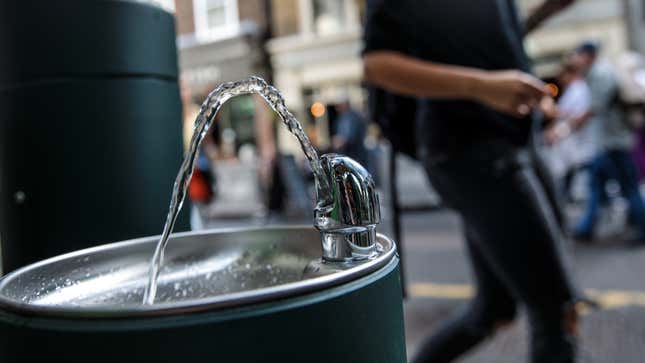
That kids (and adults) in America love their sugary drinks is no secret. But a new study out this Monday suggests that sodas and sports drinks are fully replacing water for some kids. It found that one in every five children are not drinking water at all, and that these children end up getting more calories from sugary drinks than kids who do drink water.
Researchers at Pennsylvania State University looked at nationally representative survey data from more than 8,000 children across a variety of age ranges (2-5, 6-11, and 12-19 years). It found that about one-fifth of children reported not drinking water in the past day. These children, on average, consumed 93 more calories a day from sugary beverages than those who said they drank some water—roughly twice as many calories from these drinks in total.
Studies have regularly shown that replacing sodas with water can help people reduce their daily calorie intake, while others have suggested that making it easier for kids to get refreshing cool water in school can help them lose weight. But according to the authors, theirs is one of the few to look at the link between daily water intake in children and their sugary drink habits.
These sorts of studies, of course, can’t definitively prove that drinking less water causes kids to drink more soda or vice versa. But it’s only the latest study to show a clear connection between sugary drinks and taking in more calories a day. And while an extra 100 calories a day might not seem like much, that can amount to a pound of weight gained every month. Sugary drinks also raise the risk of cavities and type 2 diabetes.
“Our study demonstrates that US children and young adults should drink water every day to help avoid excess caloric and sugar intake,” wrote the authors in JAMA Pediatrics.
On the bright side, Americans in general have been drinking less sugary soda over time. But more than two in every three Americans are still currently overweight or obese, and the rate of both groups continues to climb despite the trend away from sugary beverages. Childhood obesity among the very young has possibly plateaued in recent years, but more than 20 percent of Americans between the ages of 12 and 19 are still obese.
The risk factors of obesity—including inadequate access to affordable healthy food and places to exercise like parks—tend to be concentrated among disadvantaged groups, such as those living in poverty-stricken communities. These same communities also face environmental crises that can directly endanger their water supply (Flint, Michigan, for example) or make residents suspicious about the safety of their drinking water. Though the study didn’t examine how these risks and fears may change people’s willingness to drink water, improving water safety and accessibility should be clear public health priorities, the authors said.
“Increasing access to safe, free water is critical for childhood health, because daily water intake may help reduce [sugar-sweetened beverage] consumption and curb childhood obesity,” they wrote.